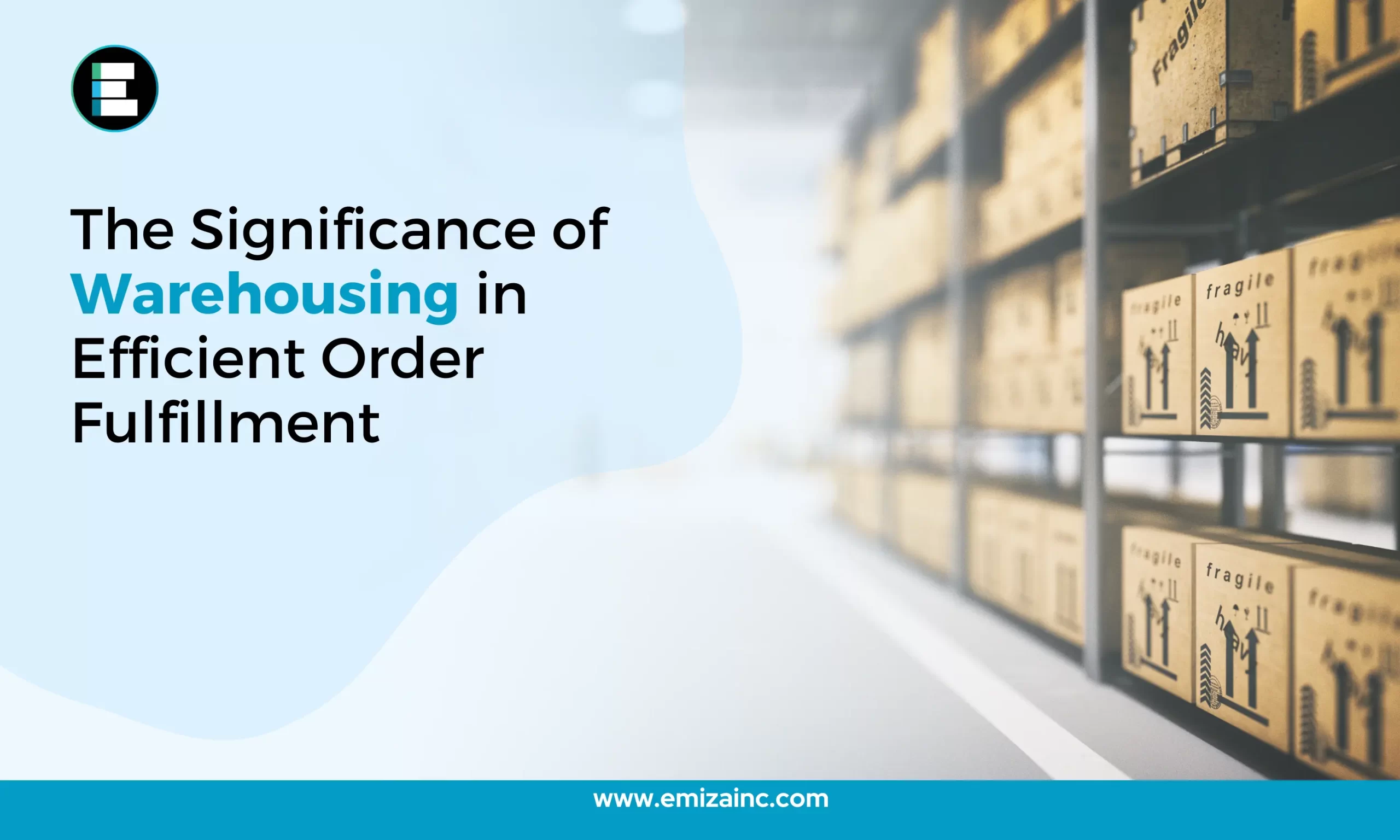The Indian e-commerce market is booming, projected to reach a staggering USD 350 billion by 2035. But behind the dazzling online storefronts and the click-and-buy convenience lies a crucial, often under-appreciated player: the warehouse. Warehousing in efficient order fulfilment is the silent orchestra conductor, ensuring your products reach your customers promptly and flawlessly.
Why Warehousing Matters
Imagine this: a customer orders a trendy phone cover. They’re excited, anticipating its arrival. But instead of a quick delivery, they face delays, incorrect items, or damaged products. This nightmare scenario can be a reality without a well-organised warehouse. Warehousing offers a multitude of benefits that streamline order fulfilment and keep your customers happy:
- Inventory Management: A warehouse provides a dedicated space to store your products, organised and readily accessible. This eliminates the chaos of keeping inventory scattered across various locations, leading to reduced stockouts and improved picking accuracy.
- Faster Order Processing: With a well-organised warehouse, locating, picking, packing, and shipping orders become a breeze. This translates to faster delivery times, enhancing customer satisfaction and potentially boosting repeat business.
- Bulk Buying Opportunities: Warehousing allows you to purchase inventory in bulk, often at discounted rates. This can lead to cost savings and a competitive edge in the Indian market, where price sensitivity is high.
- Quality Control: Warehousing allows you to implement stricter quality control measures. Products can be inspected upon arrival and during storage, minimising the risk of damaged or defective items reaching your customers. This builds trust and brand reputation.
Warehousing is more than just storage space; it’s a strategic hub that optimises your entire fulfilment process, from inventory management to faster deliveries.
Understanding Fulfilment Options
There are two main options for warehousing in India, each with its own advantages:
- Fulfilment by Merchant (FBM): You manage the entire warehousing and fulfilment process yourself. This gives you complete control but requires more time, resources, and investment in infrastructure like storage space and staff.
- Fulfilment by Amazon (FBA) or Marketplace Fulfilment Service (MFS): These services, offered by Amazon and other major marketplaces, allow you to store your products in their warehouses. They handle picking, packing, shipping, and customer service for a fee.
The ideal choice depends on your business size and needs.
- FBM is suitable for: Smaller businesses with limited product volume, those who require greater control over inventory, or those selling fragile or bulky items with specific storage requirements.
- FBA or MFS is ideal for: Businesses with high sales volume, those seeking faster delivery options, or those wanting to free up resources to focus on marketing and product development.
Consider your budget, manpower, and product type when making this crucial decision.
The Numbers Game
Warehousing costs in India can vary depending on factors like location, storage space required, and additional services needed. Here’s a rough estimate:
- FBM: For smaller businesses storing inventory in a mid-sized city, expect to pay INR 10,000 to INR 20,000 per month for renting warehouse space, excluding staff and operational costs.
- FBA or MFS: Fees for these services are typically based on a combination of storage space used, product weight, and the number of items picked and shipped. Costs can range from INR 30 to INR 50 per unit stored per month, with additional fees for fulfilment activities.
Remember, these are just ballpark figures. Research different warehousing options and fulfilment service providers to get accurate quotes before making a decision
Beyond the Basics
Here are some additional tips to transform your warehouse into a well-oiled machine:
- Warehouse Layout Optimization: Design your warehouse layout to optimise product flow, minimise picking time, and maximise space utilisation.
- Inventory Management System: Implement an inventory management system to track stock levels, prevent stockouts, and optimise reorder points.
- Warehouse Staff Training: Train your warehouse staff on proper inventory handling, picking and packing procedures, and safety protocols. A skilled workforce is crucial for efficient order fulfilment.
- Technology Integration: Embrace technology! Utilise warehouse management systems (WMS) to automate tasks, track inventory in real time, and improve overall operational efficiency. Barcode scanners or radio-frequency identification (RFID) technology can further streamline picking and packing processes.
- Scalability: Choose a warehousing solution that can scale with your business growth. This could involve opting for a warehouse with expansion possibilities or a fulfilment service provider with the capacity to handle increasing order volume.
- Disaster Preparedness: Plan for unexpected events like power outages or natural disasters. Implement backup systems and have a contingency plan in place to minimise disruptions to your fulfilment process.
Warehousing and the Future of Indian E-commerce
As the Indian e-commerce market continues to flourish, efficient warehousing will become even more critical. Here are some trends to keep an eye on:
- Rise of Automation: Expect to see increased adoption of automation technologies like robots and drones within warehouses, further accelerating order fulfilment processes.
- Focus on Sustainability: Warehouses will likely become more eco-friendly, with features like LED lighting, energy-efficient storage systems, and responsible waste management practices.
- Expansion of Fulfilment Networks: Fulfilment service providers are likely to expand their networks across India, offering businesses greater geographical reach and faster delivery options for customers.
By staying informed about these trends and optimising your warehousing strategy, you can position your business for long-term success in the ever-evolving Indian e-commerce landscape.
Conclusion
In the dynamic world of Indian e-commerce, a robust and well-organised warehouse is no longer a luxury, it’s a necessity. Effective warehousing streamlines order fulfilment, keeps your customers happy, and paves the way for business growth. Remember, the key lies in:
- Understanding Your Needs: Choose between FBM or FBA/MFS based on your business size and goals.
- Optimising Your Warehouse: Design an efficient layout, implement technology, and train your staff.
- Staying Adaptable: Embrace future trends like automation and sustainability in warehousing practices.
By following these strategies, you can transform your warehouse from a storage space into a fulfilment fortress, ensuring your products reach your customers quickly, efficiently, and consistently. So, invest in warehousing, empower your fulfilment process, and watch your Indian e-commerce venture soar to new heights!



